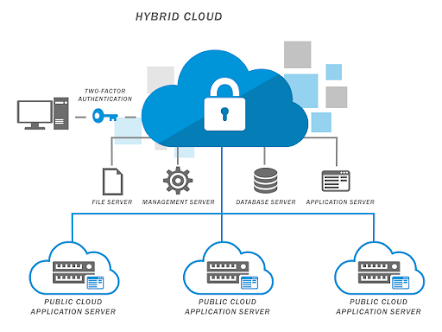Explain the case study on the use of cloud technology?
A case study on the use of cloud technology would typically involve an examination of how a particular organization or business has utilized cloud technology to improve their operations, reduce costs, and enhance their overall efficiency.
For example, a company might migrate their existing IT infrastructure to a cloud-based solution such as Amazon Web Services (AWS) or Microsoft Azure. This could allow them to take advantage of the scalability, flexibility, and reliability offered by these platforms, as well as reducing the need for on-premises hardware and IT staff.
The case study might also examine the specific applications or services that the organization is using in the cloud, such as customer relationship management (CRM) software, data analytics tools, or content delivery networks (CDNs). The study could assess how these services have improved the organization's performance or helped them to achieve specific business goals.
Other factors that could be analyzed in a cloud technology case study include security, compliance, and data privacy considerations. For example, the study might examine how the organization has addressed data protection requirements when storing or processing sensitive information in the cloud.
Overall, a case study on the use of cloud technology would aim to provide insights into the benefits, challenges, and best practices associated with cloud adoption, as well as highlighting potential areas for improvement or further development.
A real-life example of a case study on the use of cloud technology is the migration of the National Aeronautics and Space Administration (NASA) to a cloud-based solution.
NASA began its cloud journey in 2010 by adopting Amazon Web Services (AWS) as its primary cloud provider. By migrating to the cloud, NASA was able to consolidate its data centers, reduce its hardware footprint, and increase its computing capacity.
One example of how NASA has benefited from cloud technology is in the processing and analysis of satellite data. With AWS, NASA can process and analyze large amounts of satellite data in near real-time, allowing them to quickly identify weather patterns, natural disasters, and other important information. In the past, this process would have taken weeks or months.
Another example is NASA's use of AWS to power its Mars Rover mission. AWS provides the computing and storage capacity needed to process and store the vast amounts of data transmitted by the rover, such as images and environmental data. This has allowed NASA to remotely operate the Mars Rover mission from Earth and conduct scientific research on the planet.
Overall, NASA's adoption of cloud technology has enabled the organization to achieve significant cost savings, improve operational efficiency, and enhance its ability to conduct scientific research and exploration.
Actions to take regarding cloud technology adoption will vary depending on the specific organization, its business goals, and its existing IT infrastructure. However, here are some general actions that an organization can take when considering the adoption of cloud technology:
Assess business goals and IT requirements: Conduct a thorough assessment of the organization's business goals, IT requirements, and existing IT infrastructure to determine if cloud technology adoption is the right solution.
Identify cloud providers and services: Research and evaluate different cloud providers and services to find the best fit for the organization's needs. Consider factors such as pricing, scalability, reliability, and security.
Develop a cloud adoption strategy: Develop a comprehensive cloud adoption strategy that includes a timeline, budget, and a plan for migration and integration with existing systems.
Address security and compliance: Ensure that the organization's data and systems are protected by addressing security and compliance requirements. This may involve implementing encryption, access controls, and data backup and recovery procedures.
Train staff and users: Provide training and support to staff
and users to ensure they have the necessary skills and knowledge to effectively
use cloud services.
Monitor performance and optimize: Regularly monitor the performance of cloud services and optimize configurations to ensure optimal performance and cost-effectiveness.
Continuously evaluate and adjust: Continuously evaluate the effectiveness of the cloud adoption strategy and adjust as needed to ensure it aligns with the organization's evolving needs and goals.




Comments
Post a Comment